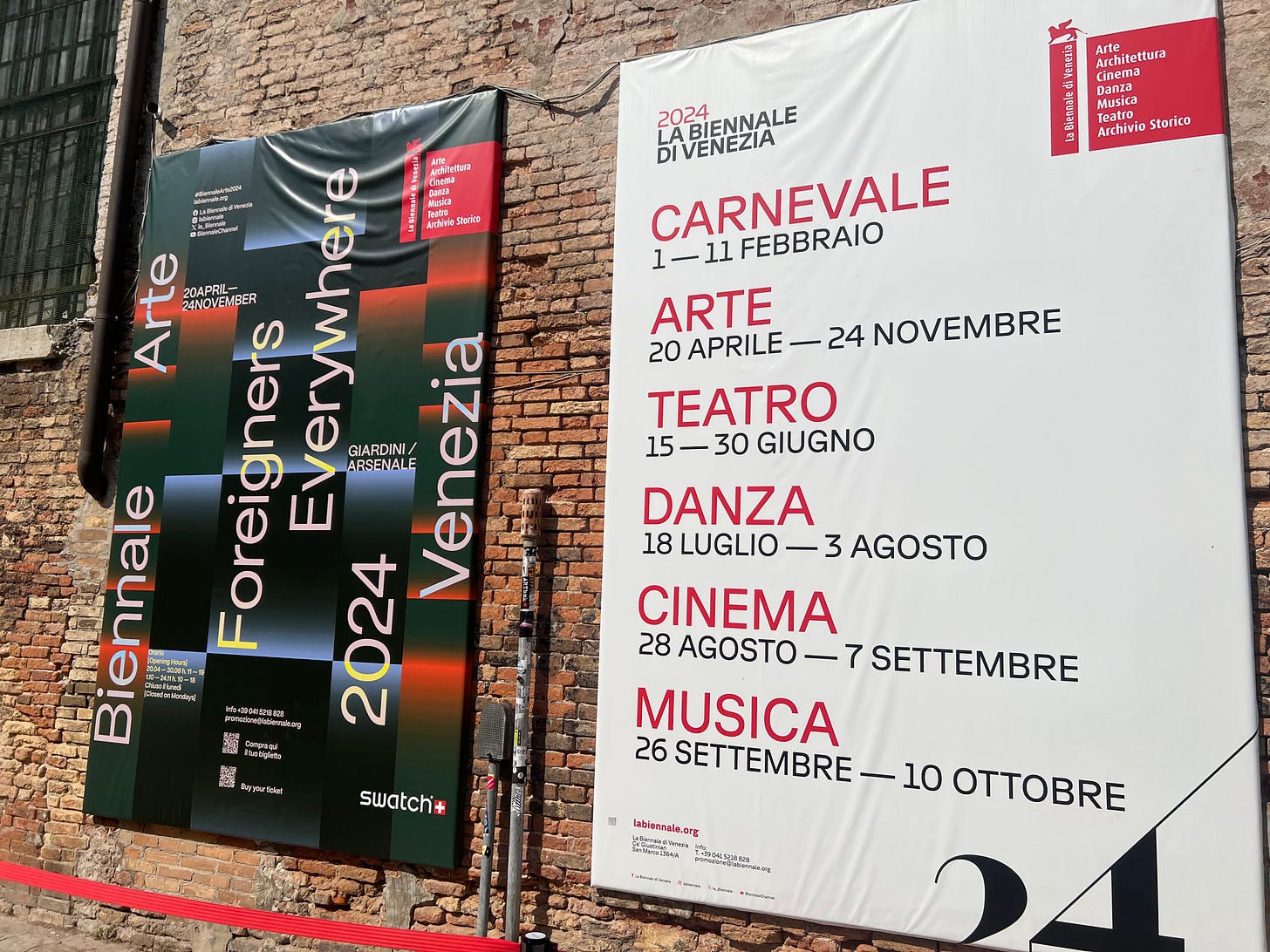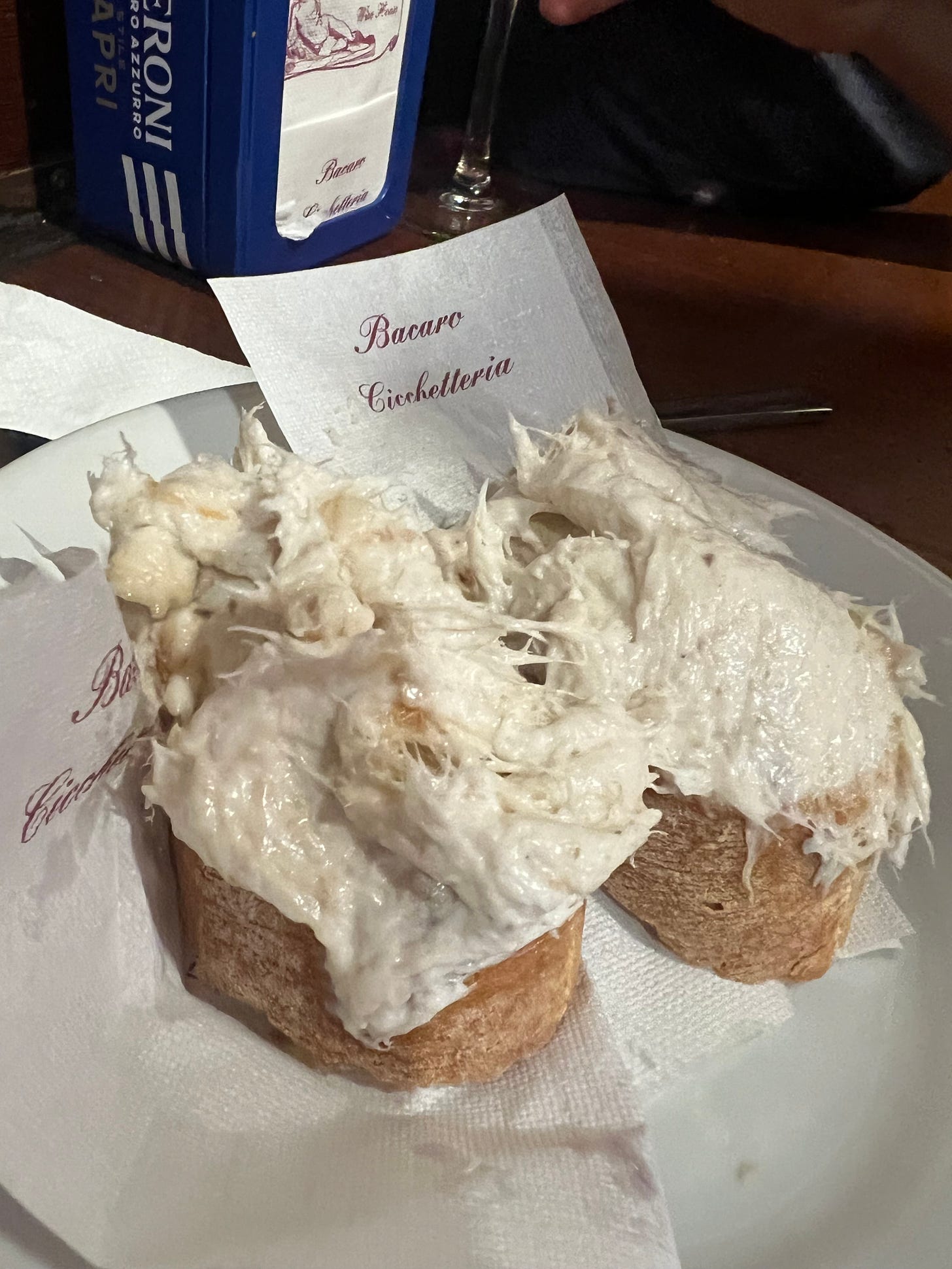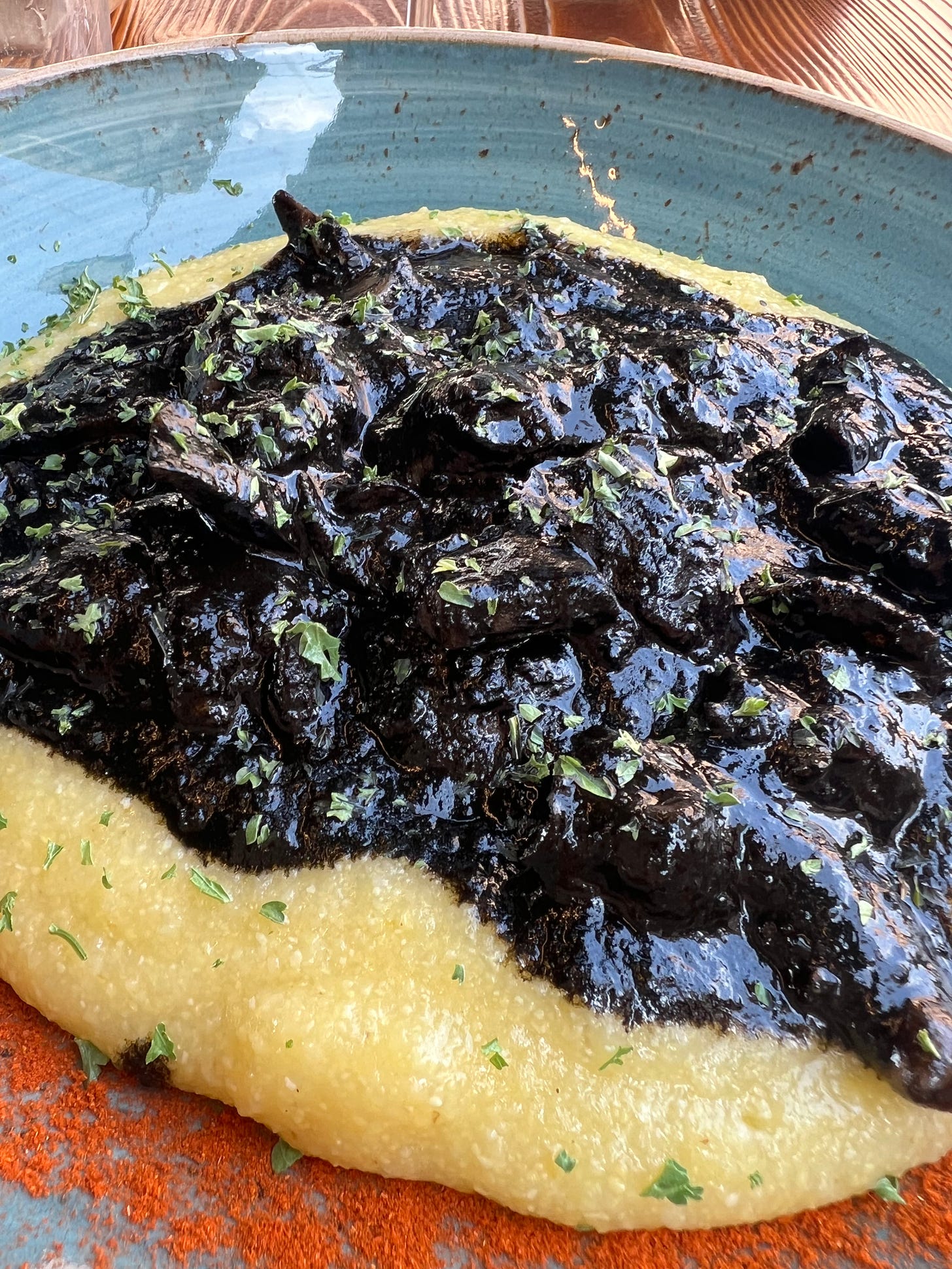Issue #171: Rice Salad
A Quick Trip to Venice, Some Food History and Food Finds, A Rice Salad You Can Make Your Own
If it’s Tuesday, this must be Venice.
I mean that both literally, as I started to draft this week’s newsletter on Tuesday while I was in Venice, and figuratively, as a reference to the movie If It’s Tuesday, This Must Be Belgium because it feels like I’ve been bouncing around the world a lot lately, and who knows where I am or what day it is.
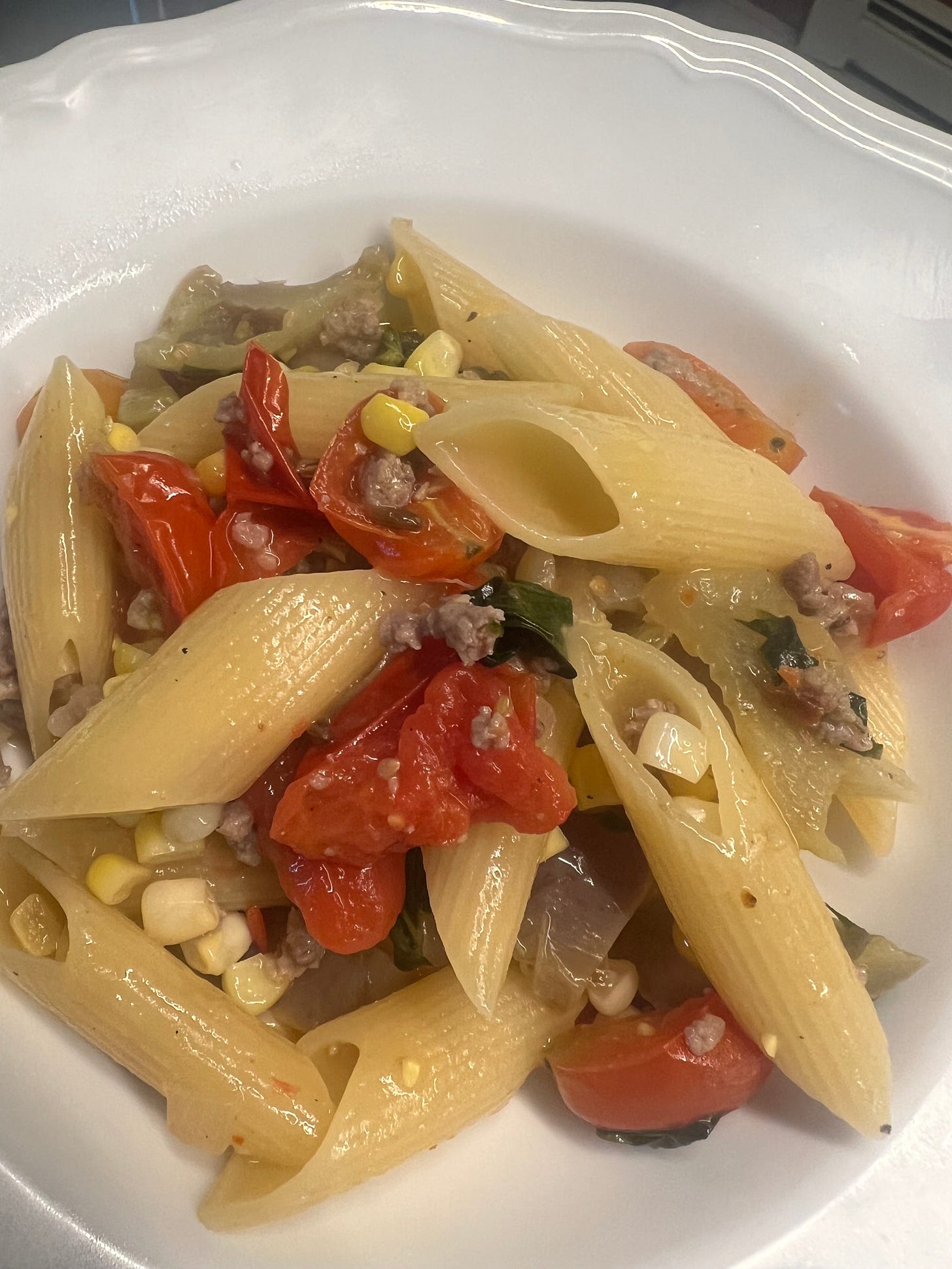
In between our two-week trip to Thailand and Japan I was only home for one day before I boarded a plane for Venice. (I managed to make a delicious pasta for dinner with that week’s CSA share from Edgewater Farm—the last vegetables I ate.)
Kitchen of Memories, the new project by the creative studio, Flavor Five Studio, I co-founded with some friends and colleagues to produce and promote artist Mattia Casalegno’s mixed-reality, immersive-gastronomy technology and art pieces, was accepted into a special immersive section of the Venice Biennale’s prestigious Film Festival over Labor Day weekend. Jet-lag aside, how could I say no? (Watch trailer, above.)
I realize it is no hardship to “have to be in Venice for the Biennale and Film Festival.” But my butt hurts from sitting so long an airplanes, buses and boats, and I miss my dog. Venice is as beautiful, implausible, and packed with tourists as ever. What I saw of the art and movies and immersive projects that were part of the Biennale were exciting and fun. Temperature wise, it was hotter than the sun.
Food wise, Venice remains a bit of a disappointment. Despite a long and rich history that made the city a Medieval center of the global spice trade, and in turn, an influential culinary capital, the endless flow in of tourists from Italy and from around the world and flow out of locals has meant you have to look pretty hard to find somewhere decent to eat. Sandwich-board menus announce imports like carbonara, pizza, pesto, and piatti vegani (vegan dishes) to the hoards of passers-by, whose heads are buried in Google Maps for fear of missing the next calle that will take them to Piazza San Marco. Even the famous cicchetti bars, where locals enjoy tapas-like snacks—many of them based on salt cod or other seafood served on bread or polenta—that accompany fine local Veneto wines, such as Soave and Valpolicella, are getting harder to find.
Where to Eat in Venice?
My colleague, Mattia, who grew up in Naples, lives in NYC, and loves Venice, led me to the best cicchetti I had at Un Mundo Divino (Salizada S. Canzian, 5984/a, 30121 Venezia), Their moscardini in umido (tiny octopus braised in tomato) served on cubes of polenta and impossibly creamy baccalà mantecato served both on a slice of bread and stuffed into in an artichoke bottom, were favorites. Just how much olive oil do you have to whip into reconstituted salt cod to give it that texture, I wondered? I probably don’t want to know.
The best restaurant meal I had was at Nevodi (Via Giuseppe Garibaldi, 1533, 30122 Venezia), where my lunch began with a tasting of three types of baccalà—mantecato, stufato, and alla vicentina. That was followed by the single best dish I ate this trip, seppie in nero, cuttlefish braised in its own ink, served on soft polenta, so richly flavored and full of umami I wanted to lick the plate clean.
Amid several mediocre gelato shops, we stumbled on a memorable one called Gelo (Rugagiuffa, 4830, 30122 Venezia), where the AC wasn’t working and it was so hot in the shop at 9:30 pm that we had to stand outside to wait our turn. The fruit flavors, fichi (fig) and sussine (plum) really stood out, tasting of fresh, ripe fruit. It was apparently the first time the gelataio had made plum, we heard our server say, while we tried to keep sweat from dripping onto our cones. He should do it again.
What to Cook?
Alas, the inspiration for today’s newsletter comes from none of these eating experiences. The best Venetian cuisine, when you can find it, is dependent on quality local ingredients—salt cod, Adriatic seafood, Italian produce—and it really plays to local tastes. (Nate would have found everything I ate above except the gelato “too fishy.”)
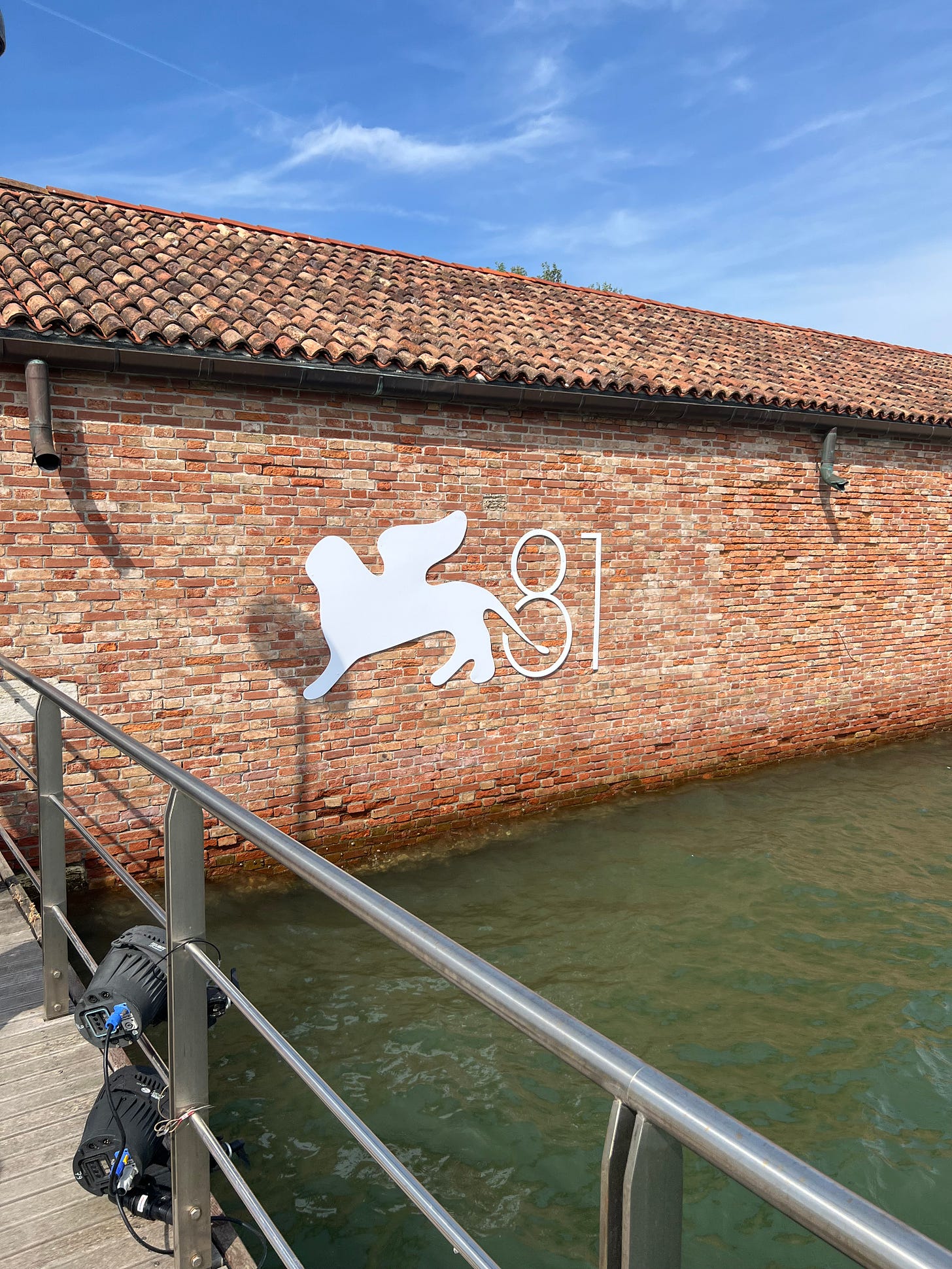
Instead, my inspiration for this week’s recipe came from the caterers on “Immersive Island,” where we found ourselves stranded in meetings most days. Set on tiny Isola del Lazzaretto Vecchio, just off the Lido in the Venetian Lagoon, the Biennale’s immersive projects and related meetings, panels, and cocktail parties were set up in a former hospital that used to treat Venetians during The Plague. There is no running water, though the air conditioning was first rate. To feed the folks coming to try the new media projects and the people who produced them, the caterers stocked a small display case daily with a selection of panini that they pressed to warm through, various commercially made cornetti and cakes (Italians really like their desserts for breakfast). and plastic, clam-shell containers of salads, among them, insalata di riso, or rice salad.
Rice is a staple of the Veneto that finds its way into local specialties, such as risotto and risi e bisi, the classic soupy dish of rice and peas that everyone is quick to remind you shouldn’t be as thick as a risotto or as thin as a minestra or soup, but somewhere in between. Rice is also the base, of course, of rice salad. Insalata di riso is popular in but not unique to Venice. When I taught for New York University in Florence, I used to eat a rice salad pretty regularly from the tavola calda (cafeteria-style restaurant) in the Sant’Ambrogio market. Wherever they eat rice, you are likely to find rice salad—including the American south—as it is an excellent use for leftover, cooked rice, especially on a hot day when no one wants to turn on the stove.
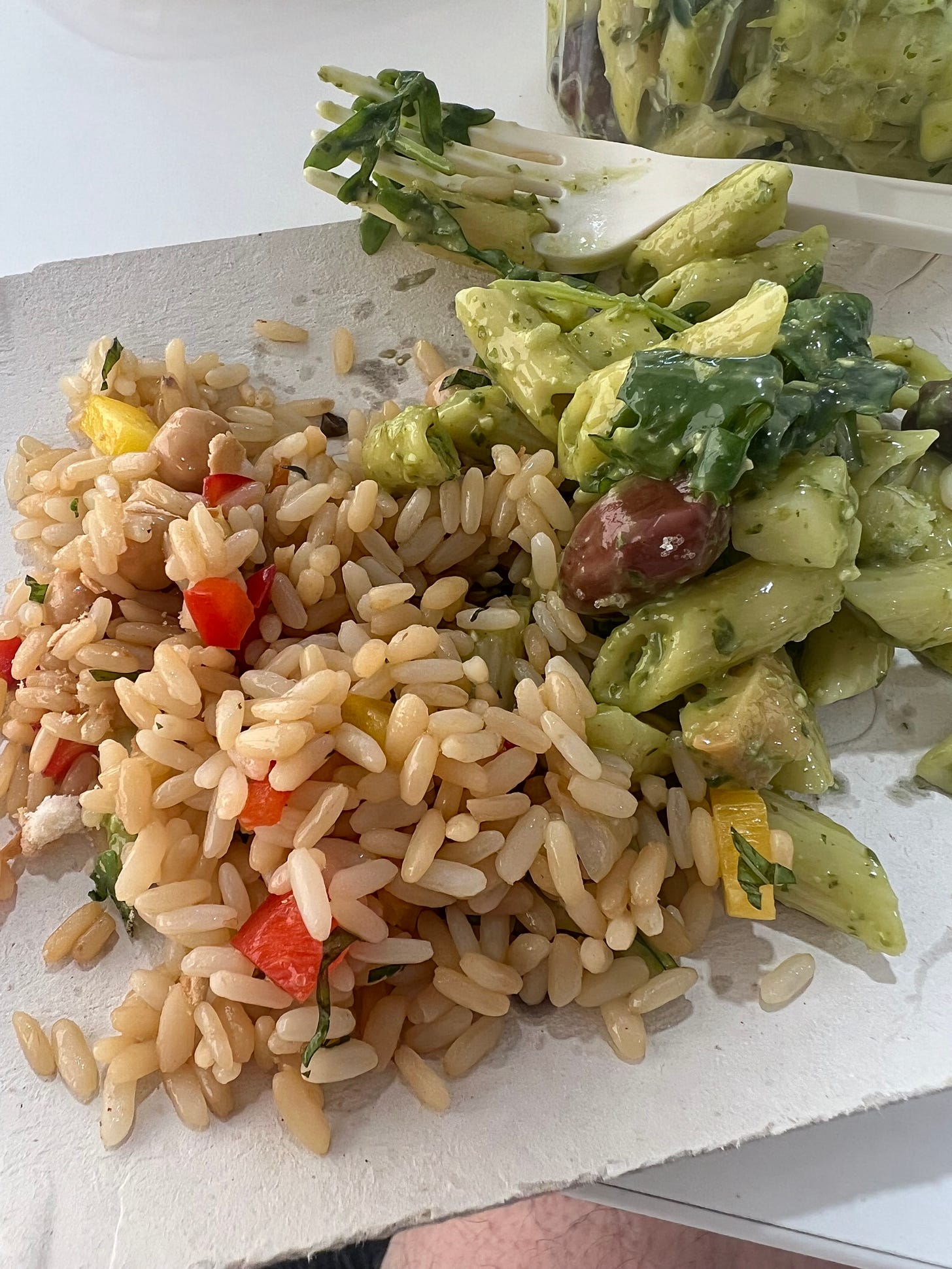
I’ve been making rice salad for ages, probably since I first lived in Italy in 1991. Not only is it an excellent use of leftover rice, but you can also put almost anything into a rice salad—vegetables, meat, cheese, nuts, herbs, even fruit, fresh or dried—and you know those are the sorts of recipes I love. In fact, the endless possibilities of rice salad make writing a recipe near impossible. You could write a book.
If you’ve never considered serving rice cold as the base for a salad, just think of it as another grain salad, like wheat berries or quinoa. What’s important is that the rice itself isn’t mushy or sticky before it’s chilled. The prized variety of rice from the Veneto is Vialone Nano, a starchy, short-grain rice that’s ideal for risotto. But unlike for risotto, which is stirred while cooking to extract as much starch from the rice as possible to make a rich and creamy risotto, for a salad, Italians boil their rice like pasta, in abundant salted, boiling water, so that the starch runs out and dissipates. Cooked this way, drained, and rinsed, the rice grains remain separate and intact. Steamed basmati rice, which also maintains separate grains, has a good texture for rice salad, as does brown rice. If your rice is clumpy when cold, the dressing will help separate the grains as it sits. But you might want to consider making fried rice, instead (see Issue #99).
As for what to put into a rice salad, you have so much to choose from. Just chop everything quite fine. You need some allium, whether red onion, shallot, scallion, and/or chives. Crunchy vegetables, such as celery, carrot, radish, and/or bell pepper, add color, texture, and flavor. Softer vegetables, such as tomato or blanched peas are also good. Diced cheese, anything from mozzarella to pecorino, and diced cold cuts, whether ham, mortadella, or sausage, are welcome additions. Fresh fruit, such as diced peaches, pitted cherries, or grapes, are not uncommon, and dried fruit, whether raisins, currants, apricots, or cranberries, are also nice. Some toasted nuts, almonds, walnuts, or hazelnuts work. And a handful of chopped fresh herbs. A spoonful or capers and/or some chopped olives, green or black. As for the dressing, I prefer a simple combination of good extra-virgin olive oil, red or white wine vinegar, salt, and freshly ground pepper. But you can make it creamy by adding a dollop of mayonnaise, Greek yogurt, or sour cream.
You can see why writing a specific recipe poses a challenge. But I’m up for it. Here goes.
RECIPE: Insalata di Riso (Rice Salad)
Serves 6 to 8
2 to 3 cups cooked, chilled rice, white or brown (see above)
1/4 cup finely chopped alliums, such as, red onion, shallots, scallions, and/or chives
1/2 cup finely chopped crunchy vegetables, such. as celery, carrots, radish, turnip, and/or bell pepper
1/2 cup soft vegetables, such as, chopped tomato, blanched peas, fava, edamame, or other cooked beans
1/4 cup diced cheese, such as, mozzarella, pecorino, or asiago (optional)
1/4 cup diced cold cuts, such as, ham, mortadella, sausage, and/or turkey (optional)
1/4 cup diced fresh fruit, such as, grapes, pitted cherries, ripe peach or apricots, or dried fruit, such as, raisins, currants, apricots, or cranberries (optional)
1/4 cup chopped toasted nuts, such as almonds, hazelnuts, or walnuts (optional)
1/4 cup chopped fresh herbs, such as parsley, chervil, basil, mint, and/or dill
2 tablespoons chopped capers and/or pitted green or black olives
1/3 to 1/2 cup extra-virgin olive oil
1/4 cup white or red wine vinegar
Salt and freshly ground black pepper to taste
In a large bowl, combine all of the ingredients except the olive oil, vinegar, salt, and pepper. Mix well, breaking up any clumps of rice as best you can. Add the olive oil and vinegar, along with a generous pinch of salt and fresh ground black pepper, and toss well. Let sit at room temperature for about 30 minutes, so the rice soaks up some dressing and the flavors come together. Toss, taste, and adjust the seasoning again before serving.



